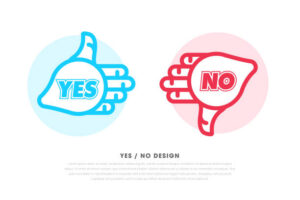Crucial Steps To Converting Browsers Into Buyers

It’s comforting to have a routine that people recognize, whether it’s your favorite coffee shop, a place to go for a walk, or a local beer store.
This personalized shopping experience can be created by many businesses to convert more browsers to buyers. It can be challenging to achieve this online, where you cannot look directly into a customer’s eyes or ask them what they want as they browse digital shelves. We still hear about the importance of eCommerce personalization.
Let’s tackle this opportunity by defining personalization, determining the best ways to implement it, and optimizing your efforts.
ECommerce Personalization: What is it?
Although personalization and customization may seem similar, there are some key differences. It is easier to understand how personalization can be applied in eCommerce by breaking these down.
Personalization is a way to create a unique shopping experience for each customer. It can be used on your website or in sales. These efforts include showing relevant products and making recommendations based on past customer behavior.
Depending on the customer’s status, you can also personalize service levels and select specific overlays or pop-ups.
Customization is a term that refers to choices made by the customer. They can be as simple as selecting or sorting products by color, size, and price. The efforts can be as detailed or specific to an individual (a client may choose not to view particular products). You can start creating personalized experiences when you consider customization a customer-driven process.
How personalization creates a better shopping experience
eCommerce companies must invest in audience research to create a customized shopping experience. Understanding your customers’ needs and wants will help you create a personalized experience that converts browsers to buyers.
Create as accurate a picture as you can of your shopper. Ask core experience questions, including:
What needs can you and cannot address?
What are the things or wants that make them decide to buy?
Why did they make the purchase?
Why should they choose to work with you?
You can create a tailored shopping experience for your customers once you understand them well. Start by learning their immediate wants and needs. Take the time to learn about their immediate needs and wants.
It’s much easier to recommend the right products if you know what ads they clicked to reach your website or what effect they recently viewed. You build based on your customers’ tastes and refine suggestions based on what makes them make a second purchase.
You can create special offers or discounts that appeal to shoppers by understanding why people value your brand. You might use this tagline if you are known for your customer service: “World-class service with free shipping for every order above $20.”
You’re not just offering a discount; you’re using language your customers will understand. By tying it to order and shipping support, you reinforce your brand’s image as one who cares for the customer.
It is also essential that the customer feels appreciated and valued. You should thank them for their patronage and resolve any problems they may be experiencing as soon as possible. Create a relationship of trust with your clients to ensure they return.
How to Personalize Your Products: 3 Easy Steps
Businesses must take three steps to get started on personalization: collect data, analyze data, and implement personalization.
Collecting Data
It is essential to start by collecting data on your customers. It could be information about their demographics, where they live, the devices they use, which pages they visit, or what products they’re interested in. Businesses can collect data in various ways, including through cookies on their website, surveys, and customer loyalty programs.
Analyze data
After collecting data on your customers, analyze them to understand their preferences and needs better. You can then determine the best way to personalize your customers’ shopping experience. This analysis can be done using various tools, including analytics software and tools for customer segmentation.
Implement Personalization
Personalization is the final step in implementing your eCommerce store. You could create a personalized home page, recommend similar products, use data to segment your customers into different groups, or offer discounts. Businesses can improve conversion rates and order values by personalizing their shopping experience.





